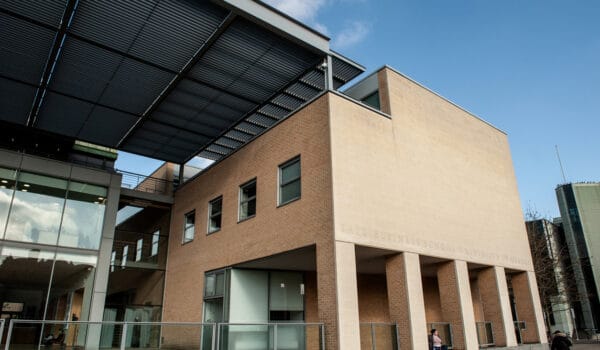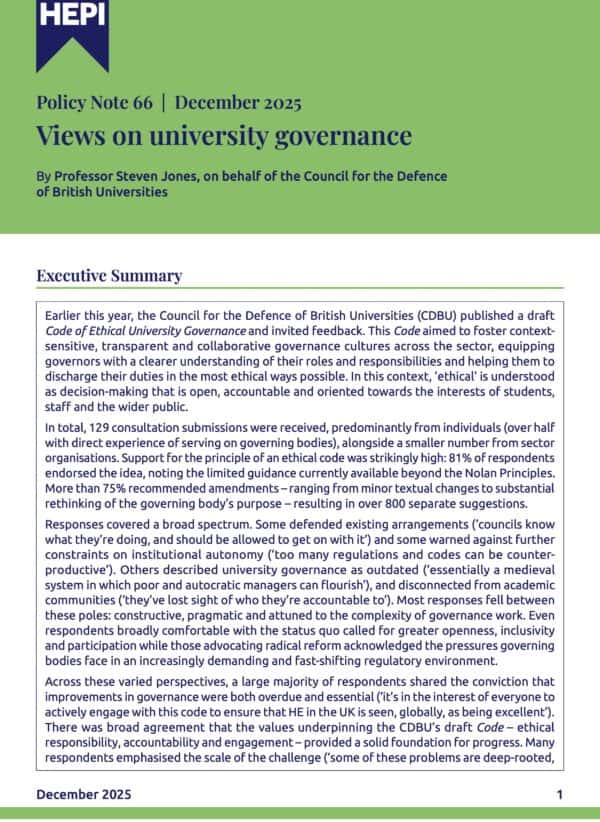On Lampeter…
This HEPI blog was kindly authored by Dr. John Cater who recently retired after 32 years as Vice-Chancellor of Edge Hill University. He now chairs the Unite Foundation. He graduated in Geography from Lampeter in 1974.
September 1822. The (English) Bishop of St. David’s, Thomas Burgess, determines the creation of a higher education establishment in mid-Wales.
December 1970. Hitch to Northampton. Train to Rugby. Train to New Street. Train to Shrewsbury. Two carriage Pacer to Dovey Junction. Split. One carriage Pacer to Aberystwyth. Two hours and thirty miles on Morgan’s coaches. Dark on departure. Dark on arrival.
January 2025. The University of Trinity St. David announces that all undergraduate teaching at Lampeter will cease at the end of the 2024/25 academic year, with all such provision transferred to Carmarthen.
Oxford, Cambridge… and Lampeter
The Scottish Ancients existed, of course, alongside Oxbridge, with Durham on the horizon, but the first higher education provider in the Principality and only the third outside the northern Celtic nation was founded in the small Cardiganshire market town of Lampeter.
But St David’s small size and an initial focus on theological training gave the institution a degree of vulnerability, notwithstanding the introduction of Bachelor of Arts degrees as early as 1865, eventually leading to threats to its continued existence as the number of ordinals declined rapidly in the 1950s. A ‘sponsorship’ agreement with University College Cardiff secured the institution’s future through to the creation of the Federal University of Wales in 1971, the College suspending its degree-awarding powers to become a constituent member. And the institution diversified, most notably moving from its solely Arts and Humanities portfolio into a broader range of disciplines, including the GeoSciences – the reason behind my circuitous ten-hour journey from the south Midlands to a remote corner of mid-Wales.
It was a great place to be. Diminutive and distinct. An Oxbridge tutorial system. In the Department on a Friday? Run Geog. Soc.. Picked up an oval ball? First XV rugby. Bowl a bit of long-hop leg spin? First XI cricket.
But in that scale and remoteness – and perhaps an inclination to stretch the portfolio too broadly – lie the seeds of the decision in January of this year. In 2008, the Quality Assurance Agency expressed limited confidence in the University of Wales Lampeter’s procedures and processes, whilst a subsequent review by the Higher Education Funding Council for Wales (HEFCW) had ‘very real concerns’ about management capacity and leadership. This led directly to discussions with Trinity College Carmarthen about a possible merger, and in 2010, Trinity St. David was born.
There is no doubt that merging an institution with a provider 23 miles away in a sub-region with no rail link and infrequent bus transport, then adding a third provider (the Swansea Institute) 51 miles distant, provides some unique challenges. Possibly only matched by the University of the Highlands and Islands, which has a very different federal model.
But the key determinant of an institution’s financial viability is its ability to attract students and to operate in a fiscal climate that allows the full recovery of costs. This was always going to be a challenge; the fixed outgoings of three campuses and the necessary infrastructure, physical and human, increasingly exceed a tuition fee that is (even) lower in Wales than in England.
Outside the Cambrian News, the silence has been deafening. But the potential effects are devastating. Perhaps less so for the overall health of the University; a branch plant is always vulnerable in a time of retrenchment, though one may have hoped that the attractions of remoteness, an immersive institution where you both lived and learned, would resonate in the market. For a town where half the population is a student, a present or past employee, or is directly or indirectly dependent on the University pound, the economic consequences, particularly through that long, wet Welsh winter, are immeasurable.
What of the future? We talk of civic universities, but they can only fully play that integral role if they are in robust financial health. Last month, Ceredigion County Council announced their intention to create a post-sixteen education centre on the Lampeter site. But, idealistic in principle may be fanciful in practice in a remote rural location over twenty miles from the nearest meaningful population centre. And it comes with a perceptual threat to the Coleg Ceredigion sites in Aberystwyth and Carmarthen, a threat that will be strongly resisted in both those communities.
From the outside looking in, fifty years having passed, the dream of the experience Lampeter offered – and, according to the 2025 National Student Survey, continues to offer – lives on. But in the harsh reality of weak recruitment and financial stringency, that dream dies.







Comments
Carolyn McInnis says:
A moving story, beautifully written. Thank you.
Reply
Ron Barnett says:
Brilliant. Beautifully written.
Can we have more HEPI blogs written with such care and delicacy, please (as compared with the bland instrumental, technical and narrow fare – and completely devoid of humanity – one is so accustomed to seeing these days)?
Ron Barnett
Reply
Dr. John Cater says:
Thank you; genuinely appreciated. And, in these tumultuous times, I suspect this is a story that may play out elsewhere.
Reply
Amanda Bennett says:
The perfect description – Diminutive and distinct. This was a joy to read – thank you.
Reply
Add comment